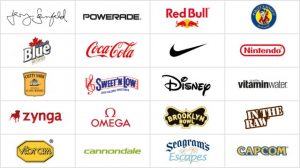Ecommerce presents a whole slew of conveniences to shoppers—from the ability to browse in your pajamas, to the capacity to read customer reviews and testimonials beforehand.
Shopping online is not without drawbacks, however, the biggest of which is that you can’t achieve the same sensory experience that you can from shopping in a brick and mortar shop (i.e. the ability to pick an item up, touch it, and get a full 360-degree view of it).
But that’s where the aforementioned reviews and testimonials, and other forms of social proof come into play.
While shopping online, you may not be able to personally inspect a particular product but you can live vicariously through other people’s experiences with that item, as evinced by the social proof, which is “frequently used to guide shoppers towards the best product choice.”

Social proof can come in a variety of forms, including…
- Reviews
- Ratings
- Testimonials
- Subscriber counts
- Social media shares and connections
- Press mentions
- Influencer endorsements
- Klout
- Bages
- Media and client logos
The question is, though, which form of social proof is the most effective?
How Social Proof Is Perceived And Recalled
The ConversionXL Institute conducted a study in which eight forms of social proof in addition to a control were assessed to see how each one was perceived (through eye-tracking) and recalled (through a follow-up questionnaire). The eight treatments were as follows:
- Press mentions with logos only
- Press mentions with logos and short quotes
- Testimonials with photos
- Testimonials without photos
- High profile client logos
- Low profile client logos
- High social following
- Low social following
Below, you’ll find the highlights from the study as described by Ben Labay.
“Perception of Social Proof Variations (Eye-Tracking)

There were differences among…how long people paid attention to different types of social proofs. The differences were driven by the three social proof versions with text (the two testimonials and the press mentions with short quotes) that resulted in the longest mean times fixating (average of 1.06 seconds). This was likely due to the large blocks of text causing increased cognitive processing (longer time to think about).
Short-Term Memory (Survey Questions)

Out of the 8 treatments (plus control), viewers were significantly more likely to remember high profile client logos (not low profile), testimonials with photos (not testimonials without photos) and press mentions.”
The Takeaways
While this study certainly had limitations, it also yielded some interesting results—namely that you should include photos with your testimonials whenever possible, and the best form of social proof is high profile client logos, “as they balance high recall with low cognitive load.”

How To Get The Best Client Logos And Testimonials
Acquiring these two forms of social proof can be a challenge, especially the former, as it means you need to be doing business with high profile clients and customers. If that’s not a position you’re in currently, it’s okay. You can also write articles about your company or products and then feature the logos of any significant media outlets that publish your work.
Or, the next best thing is to aim for the most believable, trust-inducing testimonials possible. Here are three simple strategies to do this:
1. Facebook Reviews
Any Facebook page that’s set up as a local business now comes with a reviews tab. “Simply slide this tab over into your visible tabs, and encourage your fans on your wall to go over and enter some reviews,” says Kristi Hines of Kikolani.
2. Google Alerts And Social Mention
People write unsolicited reviews about products and companies all the time on their personal blogs or other websites you’re not aware of. Therefore, it’s beneficial to set up notifications via Google Alerts and Social Mention to discover these reviews so you can get the authors’ permission to post them on your testimonials page.

3. Just Ask!
And of course, simply asking is always a possibility. Send a follow-up email to your list of buyers asking if they’d be willing to write a testimonial for you. Of those who respond look for the ones that go the extra mile by including specific details.
What forms of social proof do you use on your website? What do you think about these suggestions?





